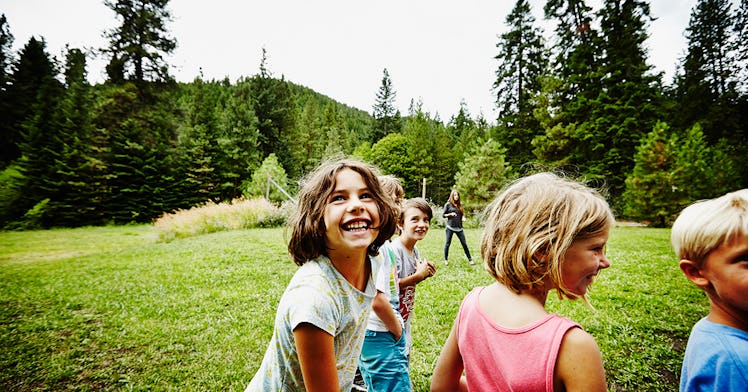Summer Camps Could Open This Summer, But Might Look Different
Here's what you need to know.

The American Camp Association (ACA), in concert with the YMCA and the Centers for Disease Control (CDC), released a field guide today on how, if at all, summer camps might be able to re-open this summer as COVID-19 continues to ravage communities and counties across the country and begins to wane in others. Because the path to reopening economies, day cares, and schools will look different across the country, it’s no surprise that summer camps won’t all open en masse, regardless of how an outbreak is doing in that country. That’s why the CDC released a decision tree for camps to follow in order to consider re-opening, and the ACA and YMCA a massive field guide on how to operate camps safely amid the pandemic in order to provide a definitive educational resource for camp directors and anxious parents who most likely want their kids out of the house, but only if it can be done safely.
The CDC’s decision tree is fairly simple. There are three steps involved in it, and if any of the conditions on each step can’t be met, the camps can’t re-open. The first step, which requires the conditions to even consider re-opening, require that re-opening is consistent with state and local orders, if camps can protect children and employees who are at a higher risk of the illness, and if camps are able to screen all children and employees upon arrival for symptoms or history of exposure. If those conditions are not met, camps can not re-open.
If they are met, then camps can go to step two. That includes whether or not camps have put in place healthy hygiene practices, if employees can wear face masks, if cleaning and disinfection and ventilation of facilities can be beefed up, and if camps can encourage social distancing, by limiting mixing between camp groups and maybe even staggering arrival and drop-off. Camps would also need to limit sharing of items like camp equipment and training all employees on health and safety employees.
If camps can’t meet a single condition, they can’t re-open. But if they can, they can meet the third step, which includes ongoing monitoring and Coronavirus plans, developing procedures to check kids and employees for symptoms of COVID daily, enhanced screening for kids in areas of high transmission, plans for if kids and employees get sick, and regular communication with local authorities. Camps will also need to implement work flexibility by getting substitutes and a plan to talk with authorities if an outbreak occurs at their camp.
This decision tree is meticulous — but not more meticulous than the ACA’s and YMCA’s field guide for COVID-19, which was developed in part by following the guidances released during the H1N1 outbreak in 2009 and amended to be more in line with COVID-19 and how it is transmitted.
Some guidances include requiring campers to measure their temperature for 14 days prior to arriving at camp, encourage contact tracing in camps, implement technology tools to assist in the case of outbreaks, have a plan for if a camper gets sick including how to remove their belongings, transport them to a hospital, clean their sleeping areas, and isolate campers they were around.
Other plans include putting face masks or coverings on someone who might be sick and how to keep sick kids who have suspected COVID isolated from other children in nurses offices or wherever kids receive health care while at camp. Some state-wide camps have allowed camps to open at a limited capacity or for a limited number of sessions in order to decrease the potential for transmission of COVID-19.
This article was originally published on